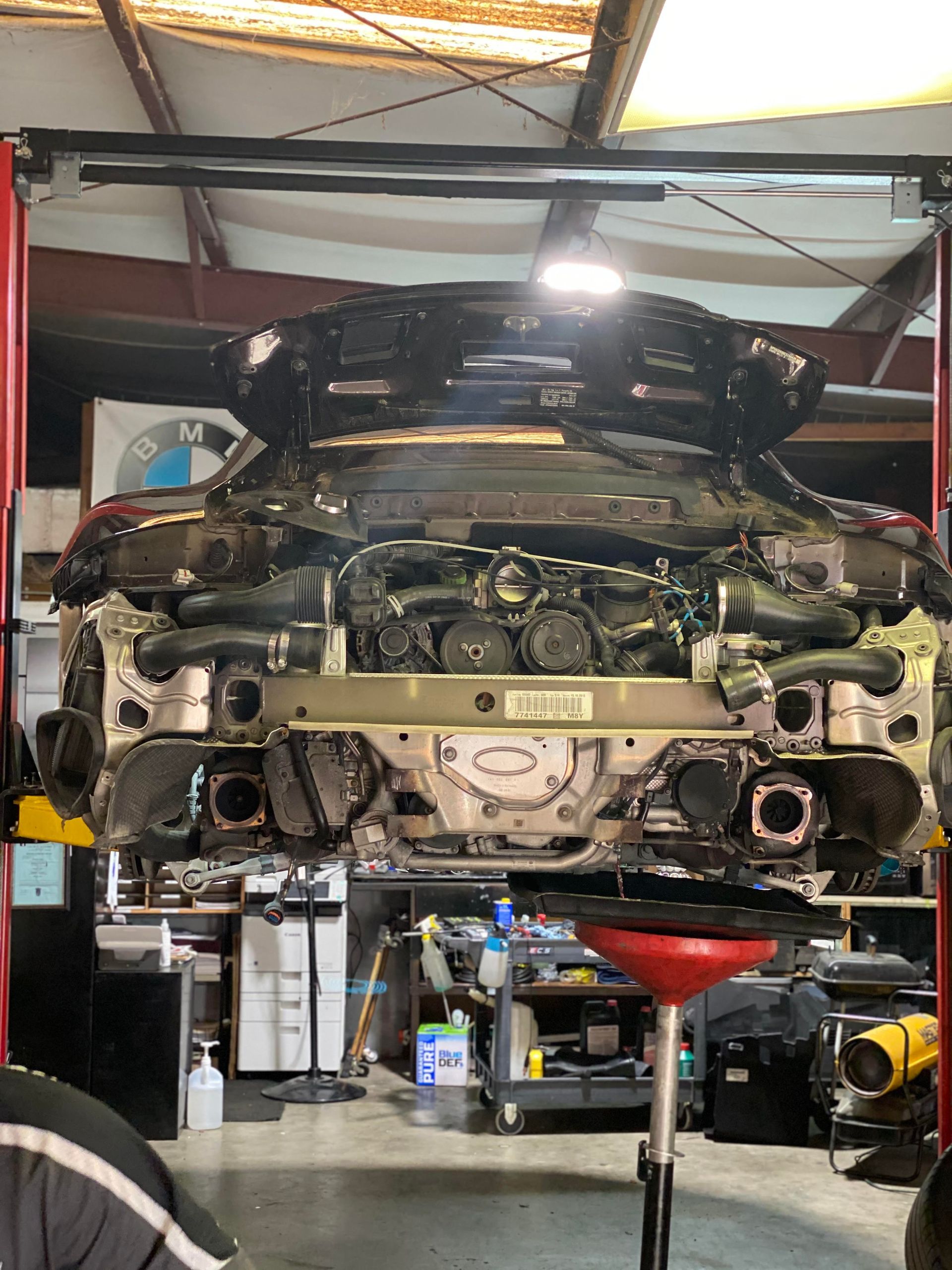PORSCHE IMS

Navigating Porsche IMS
Introduction:
Porsche, celebrated for its performance and precision engineering, has faced scrutiny over Intermediate Shaft (IMS) bearing problems in certain models like the 996 and 997 generations of the iconic 911. Here's a concise overview of what Porsche enthusiasts need to know about IMS issues.
Understanding the IMS Issue:
The IMS, integral to Porsche flat-six engines, supports the intermediate shaft driving the camshafts. Certain models between 1997 and 2005 utilized a single-row serviceable bearing prone to premature wear and failure, risking significant engine damage. 2005-2008 used a non serviceable bearing that requires the engine to be completely disassembled.
Implications for Porsche Owners:
IMS bearing failure poses a substantial risk to Porsche owners, potentially resulting in costly repairs or engine replacements. The uncertainty surrounding failure exacerbates concerns, detracting from the ownership experience.
Addressing the IMS Issue:
Owners can take proactive steps to mitigate IMS risks:
IMS Bearing Retrofit: Replace the single-row bearing with a dual-row or ceramic alternative available through manufacturers such as LN Engineering which also provides a complete solution kit that is a one and done upgrade.
IMS Bearing Inspection: Periodic inspections by qualified technicians can detect early signs of wear, allowing for timely intervention. Also having an oil sample analysis performed yearly will help monitor wear as well.
Drive it like you mean it: At start up proceed to drive immediately, never let it idle and warm up. Until the engine comes up to operating temperature keep the RPM's under 3,000. Once engine is up to temp drive it!
When replacing your IMS there are a few other upgrades to consider. We have created some packages that include other essential maintenance items.
IMS Upgrade Packages

IMS Package 1
• IMS Solution Kit with Spin-On Filter Adapter and Hardware
• Clutch Kit: OEM Porsche Clutch Disc, Pressure Plate, Release Bearing
• Rear Seal Porsche OEM
• DT 40 Engine Oil

IMS Package 2
• IMS Solution Kit with Spin-On Filter Adapter and Hardware
• Clutch Kit: OEM Porsche Clutch Disc, Pressure Plate, Release Bearing
• Rear Seal Porsche OEM
- Air/Oil Separator
- Water Pump/ Gasket
• DT 40 Engine Oil

IMS Package 3
• IMS Solution Kit with Spin-On Filter Adapter and Hardware
• Clutch Kit: OEM Porsche Clutch Disc, Pressure Plate, Release Bearing
• Rear Seal Porsche OEM
- Air/Oil Separator
- Water Pump/ Gasket
- Low Temp Thermostat/ Gasket
- Magnetic Drain Plug
- Spark plugs
- All 3 Chain Tensioners
• DT 40 Engine Oil
Conclusion:
The Porsche IMS issue underscores the complexities of automotive engineering and the importance of proactive maintenance. Despite concerns, solutions like retrofit kits and upgraded bearings offer avenues to preserve the Porsche driving experience. By staying informed and taking appropriate measures, enthusiasts can enjoy their Porsches with confidence, nurturing the bond between driver and machine that defines the brand.
M97 IMS BEARING DIRECTIVE
So you did extensive research on the Porsche IMS bearing failures and felt that you were safe to buy a 2005-2008 MY Porsche with the M97 equipped larger diameter IMS bearing.
Yes, you were mostly correct, the larger diameter M97 IMS bearing is a much better choice, but it is not totally immune to failure. The M97 IMS bearing has proven itself to be reliable, but with a little care it can be a non-issue altogether.
Here is a small list of easy to perform items that can decrease your IMS worrying to almost zero:
Change the engine oil and filter every 3k miles or 6 months, even though you are running synthetic lubricants.
Utilize a boutique type of synthetic engine lubricant that has elevated levels of ZDDP (Zinc Dialkyldithiophosphate) additives with a minimum of 1250 PPM.*
Cut the engine oil filter open and inspect it for any metal (ferrous and nonferrous), plastic (brown or black) and/or rubber (black) debris at every engine oil change.
Have an engine oil analysis performed at every oil service, we recommend the Tribologist Lake Speed at SPEEDiagnostix. Once will not suffice, you must have a cluster of data, to monitor the trend of your engine wear.
Replace the engine oil filter housing at every engine oil service. You can buy the filter housing with filter element together, at a small increased price.
Install an LN Engineering magnetic engine oil drain plug.
Install an LN Engineering spin-on oil filter which has improved filtration capability and bypass valve. Not all models possible.
When you start your Porsche, take off immediately, but keep the load request at a minimum, i.e. half throttle and under 3,000RPM until the engine reaches operating temperature.
CAVEATE: only if the ambient temperature is 30°f or higher. If your ambient temperature is below 30°f, let your engine idle for at least 5 minutes before starting off. If your ambient temperature is below 10°f, I would not recommend starting/driving your Porsche.
Whenever the engine is started, drive the car for at least 20 minutes. This will ensure that you are burning all the moisture out of your engine oil.
When the engine is at full operating temperature, drive with the RPMs elevated, and if possible accelerate to/or near engine redline one or more times per driving cycle under full throttle. Only upshift when above 3,000 RPM.
As soon as you possibly can, remove the gearbox, flywheel, IMS bearing flange and then remove the M97 IMS bearing seal. This is the single most important item you can perform; it will allow the engine oil to EHL (elastrohydrodynamic) lubricate the IMS bearing sufficiently.
*If your concern with ZDDP is catalytic converter degradation, you must first understand that if your engine isn’t burning the engine oil at an elevated rate, you will not have elevated amounts of ZDDP in your exhaust to contaminate your catalytic converter. PLUS might I add that I would rather replace the catalytic converter at 125k-150k miles than an engine at ~40k miles.
